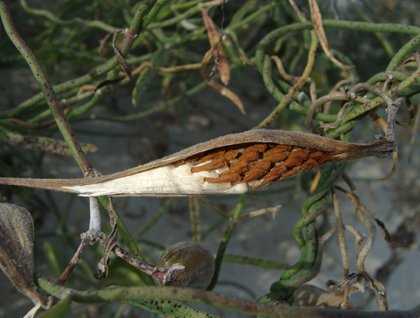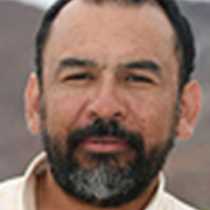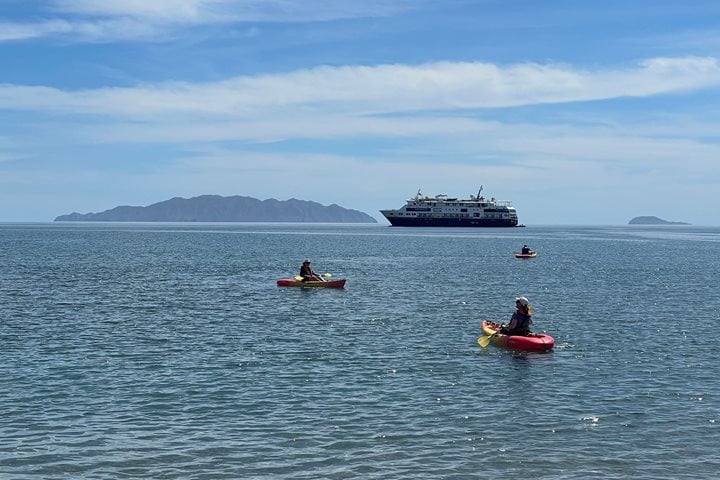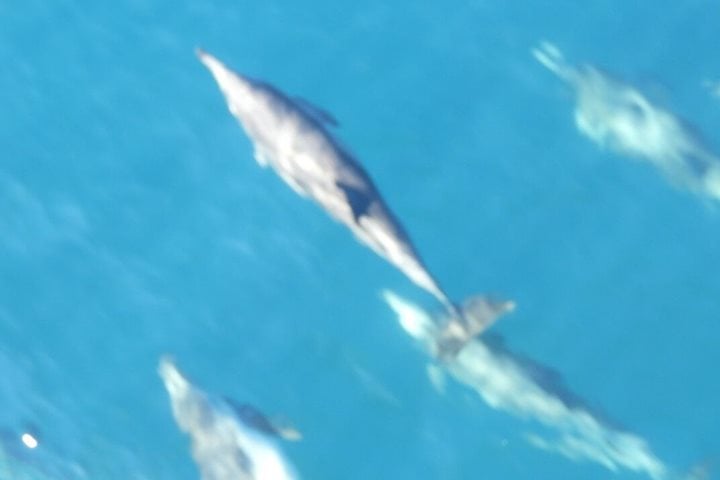This morning everybody aboard National Geographic Sea Bird continued whale watching in Boca de la Soledad. Early cruises were prepared to take advantage of the tide’s reversal, which brought a calmer sea to the lagoon. As soon as the groups of guests and naturalists on boats arrived to the Boca, several pairs of gray whales were observed. They were traveling fast in and out, clearly exhibiting an anxiety to return to the feeding grounds in the Bering Sea. Mother cows, for sure, were hungry, and the calves, certainly, were ready and eager to go out and confront the currents and challenges of the Pacific Ocean. We admired them all for the last time on this trip because, later, our pilot Alejandro was picked up and took the ship southbound.
The ship navigated again along the Canal de la Magdalena with a low tide that allowed everyone to admire the mudflats on its sides, with multiple bird species flying above, busy on the shore, or swimming away in the water. The beautiful mangroves—red, white, and black—lined the channel to the anchorage point, which was just west of the middle portion of Santa Maria Bay on Magdalena Island.
Once we arrived to this location, guests and staff walked over the dunes to reach an amazing place called Sand Dollar Beach on the Pacific side—so named because of the great abundance of sand dollars, flat echinoderms closely related to sea urchins and sea stars. While on the dunes, the staff discovered the many different plant species that thrive here. There were sand verbena, sea purslane, evening primrose, milkweed, and many more. In particular, the seeds of the local milkweed caught our attention because they were bearing filamentous fibers in order to be dispersed by the wind. Once on Sand Dollar Beach, some of our guests enjoyed a refreshing swim in the wild waters of the ocean, and others walked and found thousands of shells of different types on the wide beach composed of white and fine sand. It was a wonderful and relaxed end of our voyage among the gray whales.







